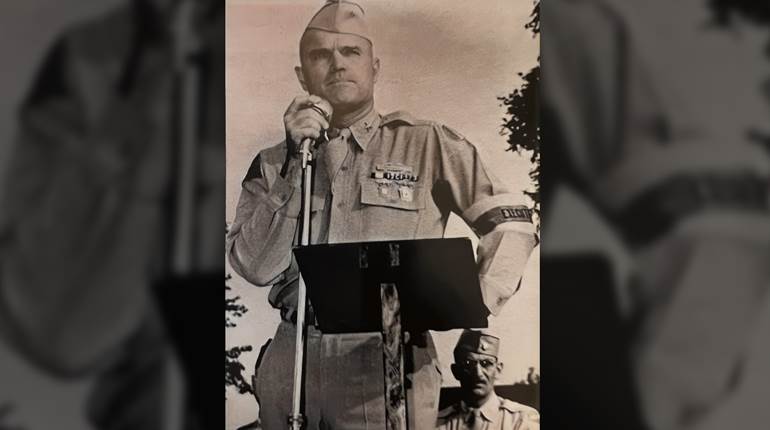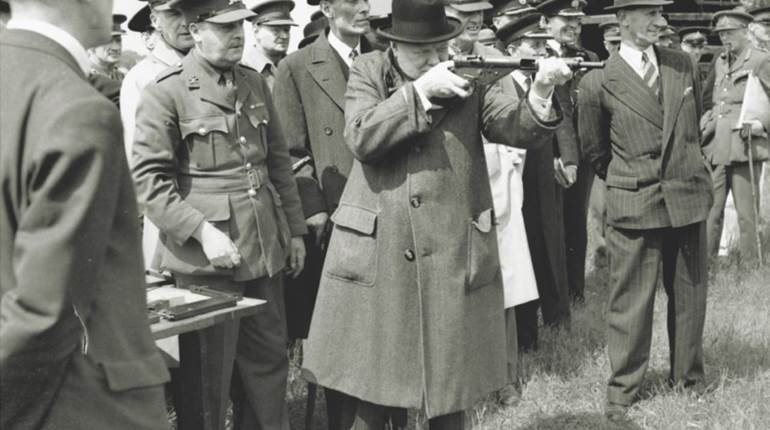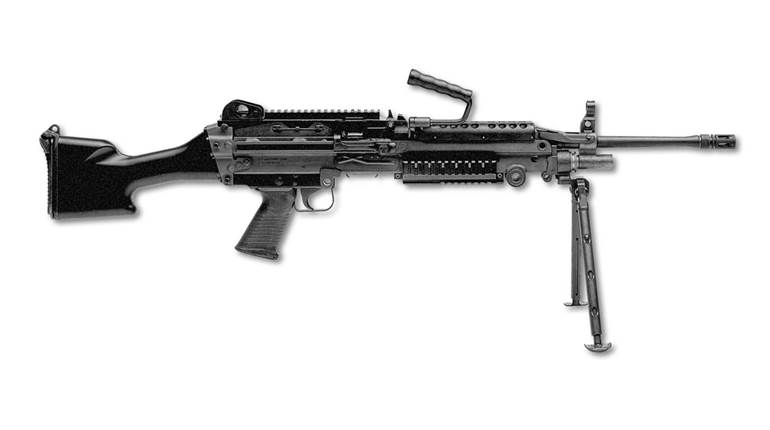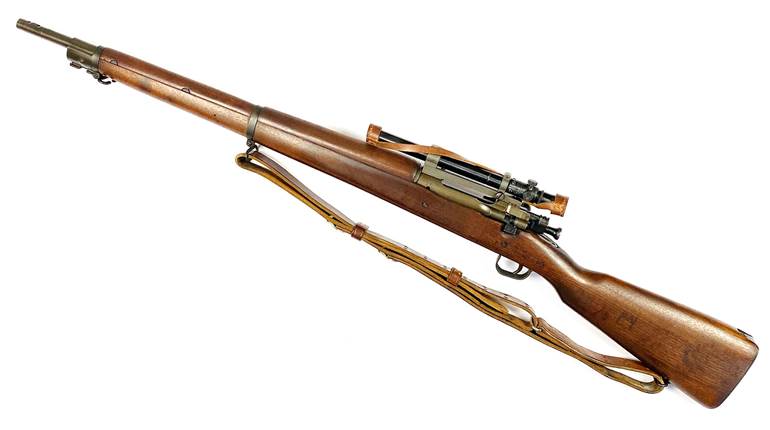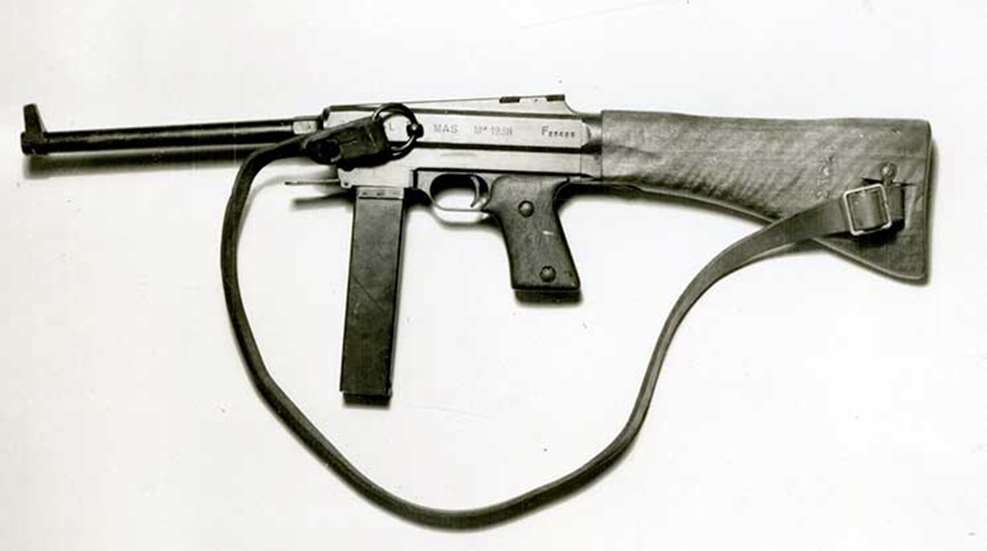
Images courtesy of Armor Plate Press.
Beginning on May 10, 1940, German forces struck against Western Europe, invading Holland, Belgium and France. By June 5, Holland and Belgium had fallen, and what remained of the British Expeditionary Force had been evacuated to England. Paris fell on June 14. By June 22, the Battle of France was over. With a stroke of a pen, France signed an armistice with Germany and hostilities were over on the continent. Western Europe was under Nazi control, and Hitler danced his little jig at Versailles.
The photos presented here show many of the small arms of the Battle of France. Certainly to be of interest to firearms enthusiasts and history buffs, the images represent the infantry weapons of the earth-shaking Blitzkrieg that thrust World War II into full gear in the West. But these are also illustrations of a cautionary tale: No one believed or expected that the numerically and technologically inferior German forces could overwhelm the Allies and control the continent in little more than five weeks.
Over time, the legends of the Blitzkrieg would have us believe that German forces represented an overwhelming strength of numbers and technological might. The reality is shockingly different. France alone could deploy more than three times the number of armored vehicles than Germany’s panzer force. Just 10 percent of the Wehrmacht was even motorized at all, with many German units relying on horses (and this remained true even until the end of the war).
Only half of Germany’s divisions were truly combat ready, and almost all German units were not as well equipped as their French or British opponents. During the 1940 battles, almost half of all German Army troops were at least 40 years old, comprised of men mature enough to have served in the Great War.
While French officials maintained tepid confidence behind their Maginot Line, German planners found innovative ways to go over, around and through the obsolescent forts and the outdated “Maginot Mentality.” With Germany’s new quick-strike, combined arms principles of the Lightning War, there would be no repeat of the plodding trench warfare of World War I. Casualties were minimized by comparison, but then again so was French independence.
German infantry arms were superior to those of the French and Belgian forces, and were slightly better than those of the British. In 1940, the Battle of France saw the first significant use of some of the finest light machine guns of the war: Germany’s MG34 (as well as many captured Czech ZB vz. 26), the British Bren gun, and the lesser-known French Modèle 24/29 (Chatellerault).
The Germans had also introduced a growing number of submachine guns into their armed forces, and the then ultra-modern MP40 made a huge impression on the SMG-starved British. While the Panzers and Stuka dive bombers captured the headlines, astute observers saw the dawn of a new era of infantry firepower during the Battle of France.
By the summer of 1940, England stood alone, and the British armaments industry struggled to resupply its army with up-to-date infantry weapons. English eyes turned to America, soon to become the Arsenal of Democracy.
Here's a look at a few little-known images from the Battle of France, detailing the men who fought and the guns they used:
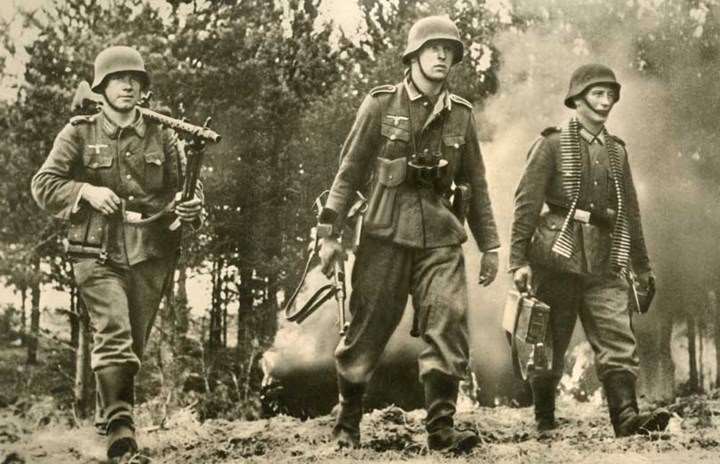
Blitzkrieg Team
Two of the most influential infantry weapons of the Blitzkrieg: the German MG34 light machine gun and the MP40 submachine gun. These innovative firearms would occupy the thoughts (and nightmares) of Allied arms designers in the long months ahead.
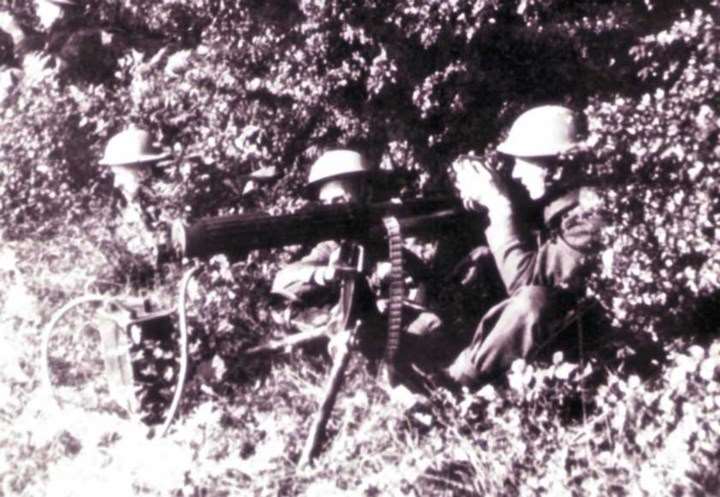
Left Behind
German soldier’s photo of captured Vickers machine guns in France 1940. Thousands of British infantry arms were abandoned to the Germans after the “Miracle of Dunkirk” evacuation. In German service, the Vickers was designated the 7.7 mm sMG 230(e).
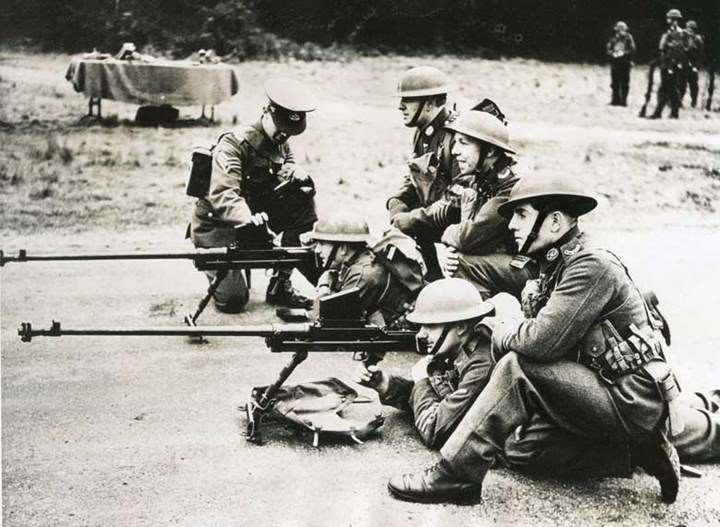
Preparing To Face The Panzers
British troops train with the .55-cal. Boys anti-tank rifle Mark I. The Boys was reasonably effective against tanks of the era (21 mm of armor penetrated at 300 meters), but was unpopular due to its excessive recoil and tremendous weight (36 lbs. unloaded).
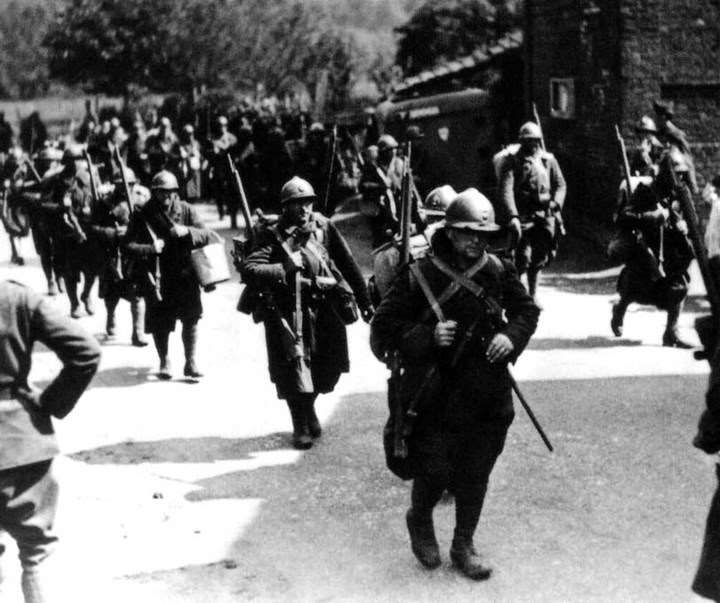
Marching To War Again.
Glum French troops march to frontline positions in the spring of 1940. These men are armed with the archaic Lebel Model 1886 rifle, chambered in 8x50 mm R Lebel.
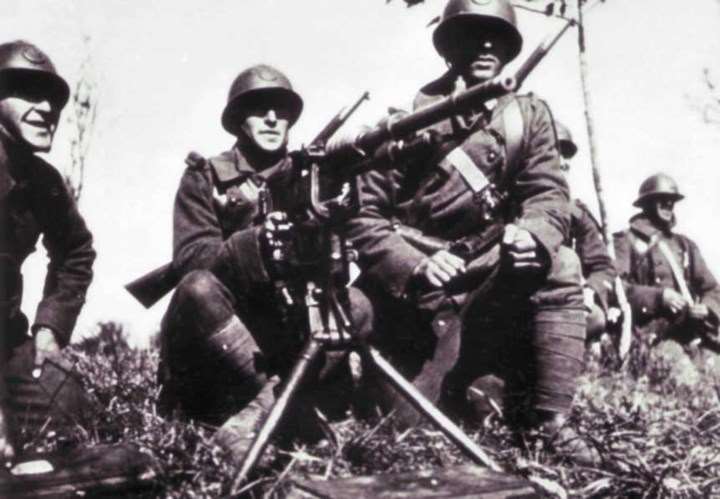
Held Over From The Great War
French troops with the 8 mm Hotchkiss Mle 1914. The strip-fed Hotchkiss had been France’s primary heavy machine gun in World War I, and it served the same role in 1940.
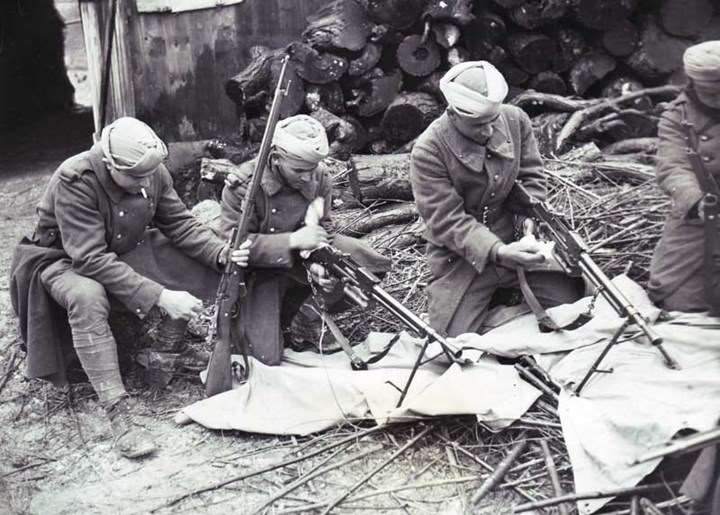
Colonial Troops In The Defense Of France.
Moroccan troops clean their arms during 1940. To the right are a pair of Mle 1924/29 light machine guns (7.5 mm), and to the left, a Berthier Model 1907/15 rifle (8 mm Lebel).
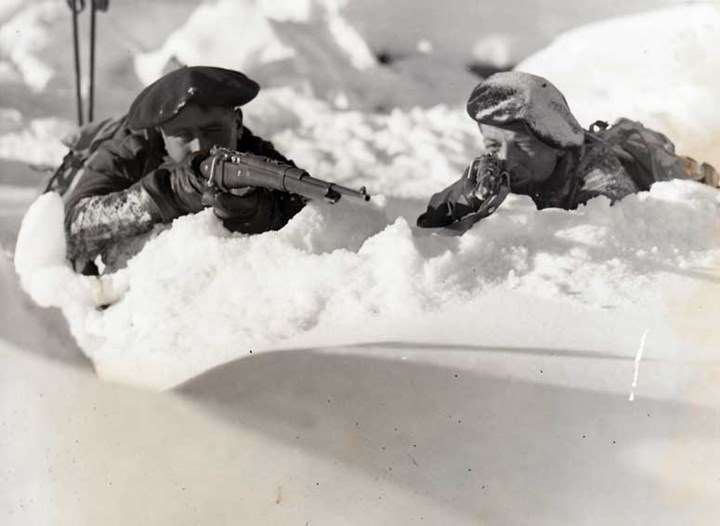
The Battle Of The Alps
Italy attacked France on June 10, 1940, and two weeks of fighting in the French Alps ensued. These French mountain troopers are equipped with the Berthier Carbine Mle 1892 M16. Another holdover from World War I, the Berthier Carbine was chambered in 8 mm Lebel, and proved to be a solid and reliable little rifle that served French troops until the early 1960s.
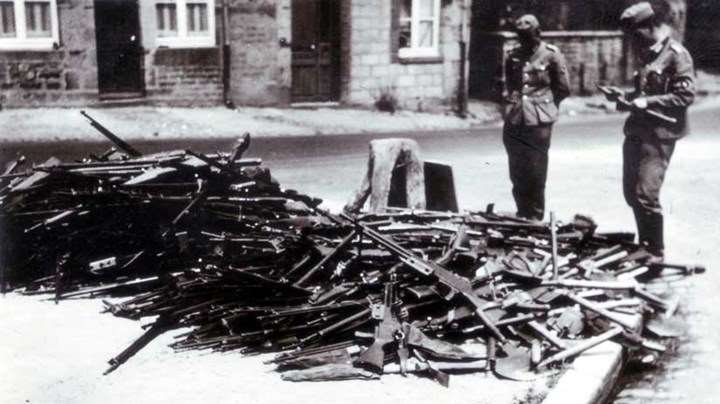
The Spoils Of War
A German soldier’s photo of a French small arms collection point in 1940, featuring a pair of Mle 1924/29 light machine guns and a wide assortment of French rifles. All of the captured arms from Holland, Belgium, France and England went into the Wehrmacht’s arsenal.
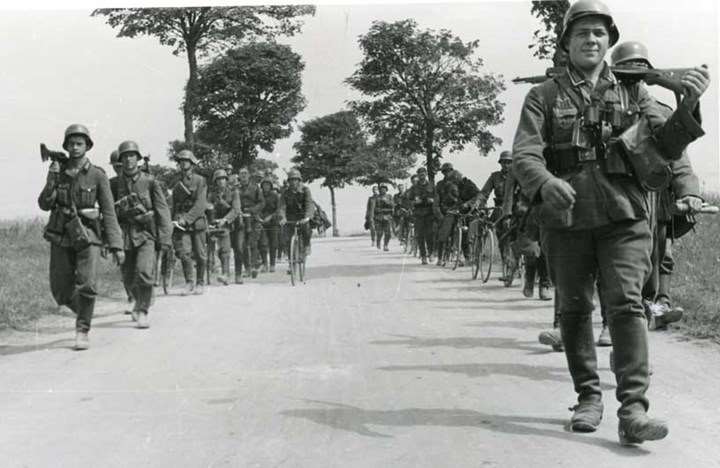
Marching Into France
For German troops in 1940, their efforts were rewarded with a stunning victory and a complete reversal of the humiliating Treaty of Versailles in 1918. In a little more than four years, this advance into France would be turned into a headlong retreat.
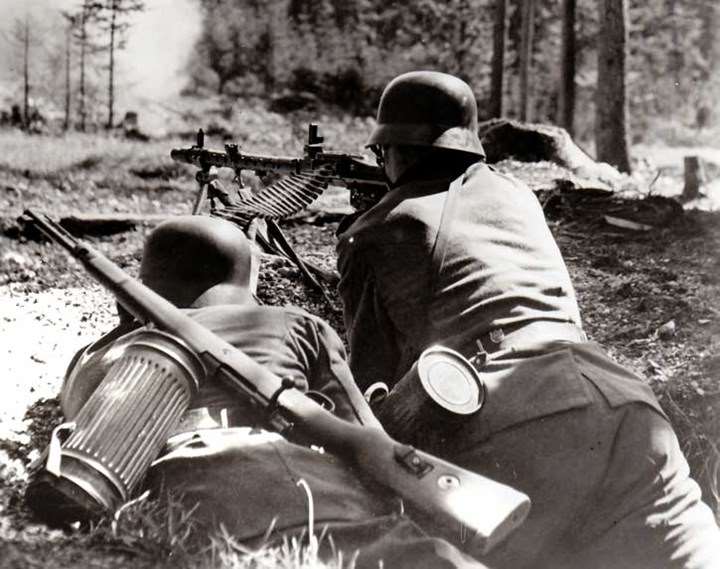
Germany’s Base Of Infantry Firepower
By the spring of 1940, the ground-breaking MG34 was the finest general-purpose machine gun in the world. Light (26.7 lbs), fast-firing (900 rounds per minute), and highly effective, the MG34 brought firepower and mobility to the German infantry’s contribution to the “Lightning War.” The gunner’s assistant carries ammunition and the Kar98k rifle.
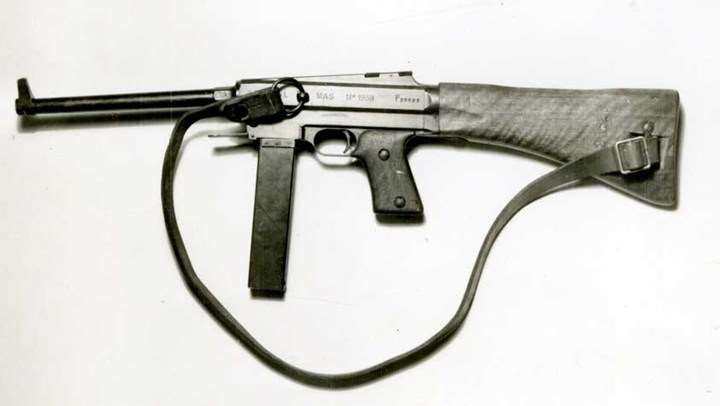
Little-Known French Submachine Gun
The M.A.S. Modele 38, chambered for the French 7.65 mm Long pistol round. It was light (about 6.5 lbs.), well made of machined steel, and easy to use. Unfortunately for the French, few had been made prior to the 1940 invasion. The Germans thought enough of the gun to keep it in limited production during the war to equip collaborative French police units and for their own occupation troops.
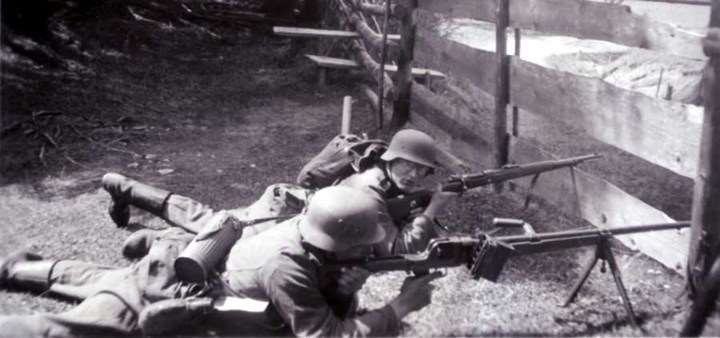
Man-Portable Anti-Tank Technology
In 1940, the anti-tank rifle was best weapon the infantryman had in the battle against the tank. The German 7.92 mm Panzerbuchse PzB 39 fired a 7.92 mm bullet (with a tungsten core) necked down from a 13 mm cartridge.
Offering 30 mm of armor penetration at 100 meters, the PzB 39 was ineffective against many Allied tanks of the era. Within 18 months of the Battle of France, the PzB 39 had essentially disappeared from frontline service.












